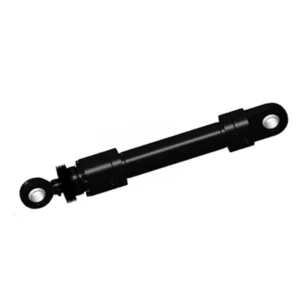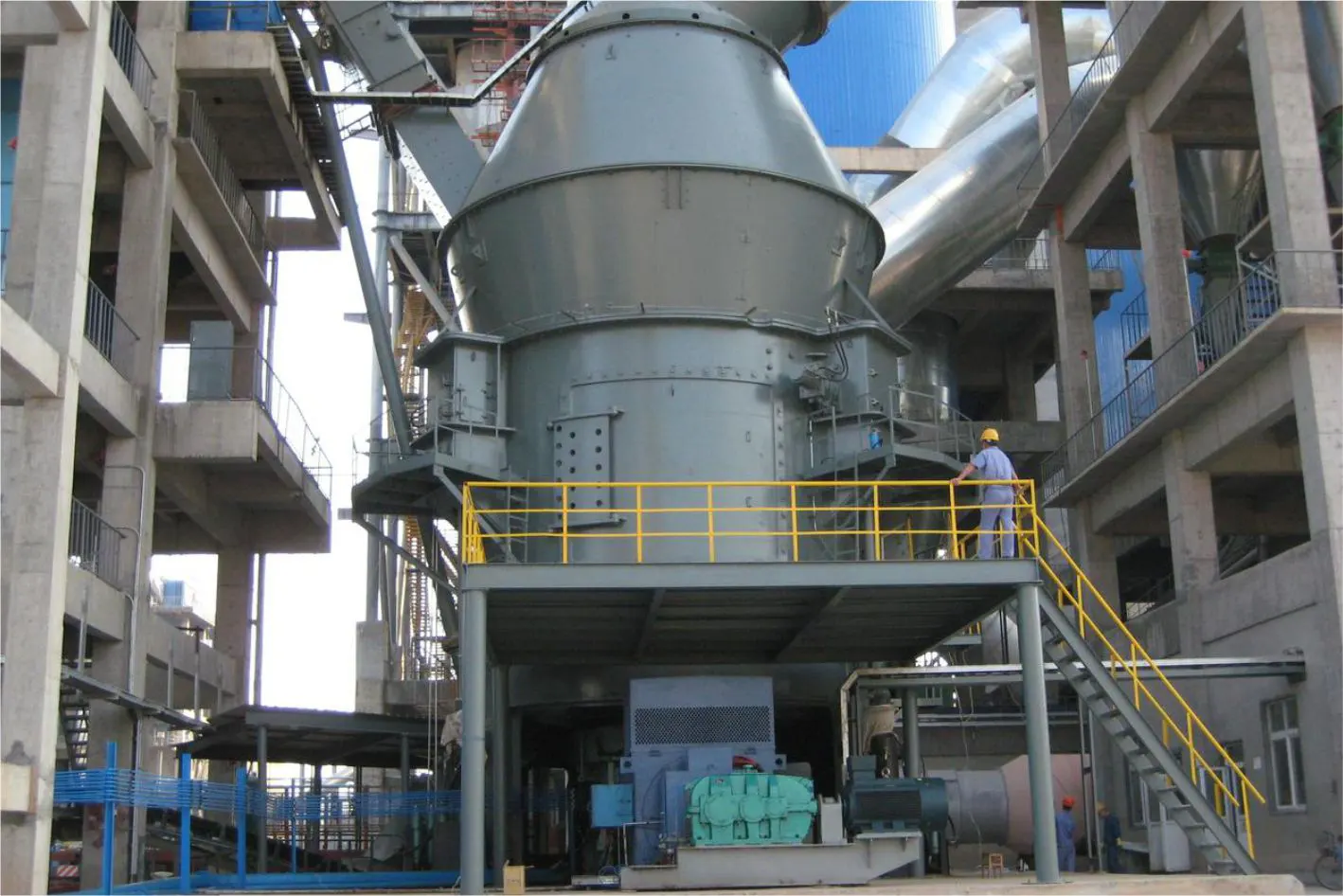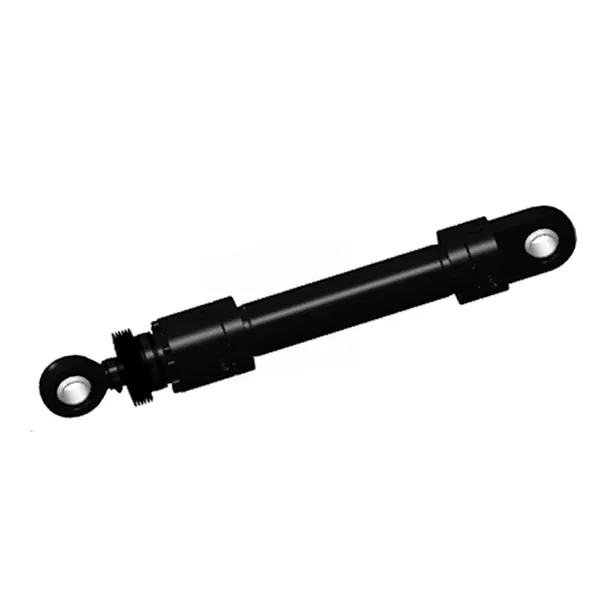Cement Equipment Feeding Cylinder
Cement Equipment Feeding Cylinder

The cement equipment feeding cylinder is a vital component in cement production, specifically designed to enhance efficiency and precision during the feeding process. This specialized cylinder plays a crucial role in cement plants, enabling controlled and accurate feeding of raw materials into the cement manufacturing machinery.
The cement equipment feeding cylinder is an indispensable component in cement production, enhancing efficiency and precision during the feeding process. With its robust construction, precise control, adjustable stroke length, and reliable sealing mechanism, this cylinder ensures accurate and consistent material flow, contributing to optimized cement manufacturing operations. By following the recommended usage methods and maintenance practices, operators can maximize the performance and longevity of the cement equipment feeding cylinder, ultimately improving the efficiency, productivity, and quality of cement production.
Cement Equipment Feeding Cylinder Key Characteristics:
- 坚固的结构
- The cement equipment feeding cylinder is constructed with high-quality materials to ensure durability and longevity in demanding cement plant environments.
- It can withstanding heavy loads and the rigors of continuous operation without compromising performance.
- Precise Control:
- This cylinder is designed to provide precise control over the feeding process, allowing for accurate and consistent material flow.
- It enables operators to maintain optimal feeding rates, improving efficiency and product quality.
- Adjustable Stroke Length:
- The cement equipment feeding cylinder offers adjustable stroke length, allowing flexibility in the volume of material delivered during each feeding cycle.
- Operators can fine-tune the stroke length based on specific production requirements and material characteristics.
- Reliable Sealing Mechanism:
- The cylinder incorporates a reliable sealing mechanism that prevents leakage and ensures a consistent feeding process.
- It minimizes material wastage and promotes a clean and efficient production environment.
Cement Equipment Feeding Cylinder Parameter:
| Product Name | Cement Equipment Feeding Cylinder |
| Features: | Promote the reciprocating movement of the grate bed of the grate cooler |
| Bore diameter: | 80mm~140mm |
| Rod diameter: | 45mm~80mm Stroke: ≤1200mm |
| Thrust force: | Max 385KN (Cylinder diameter 140mm/pressure 25MPa) |
| Cement Equipment Feeding Cylinder Applications: | Cement Equipment |
Rod diameter: 45mm~80mm
Stroke: ≤1200mm
(Cylinder diameter 140mm/pressure 25MPa)
Cement Equipment Cylinder Factory:

Usage Method Of Cement Equipment Feeding Cylinder:
- Installation:
- Follow the manufacturer’s guidelines to securely install the cement equipment feeding cylinder into the cement manufacturing machinery.
- Ensure proper alignment, attachment, and integration with the feeding system.
- Adjustment:
- Adjust the stroke length of the cylinder according to the desired feeding volume and rate.
- Refer to the manufacturer’s instructions for specific adjustment mechanisms and settings.
- Material Loading:
- Load the desired raw materials into the feeding system, ensuring they are correctly positioned for smooth and uninterrupted feeding.
- Avoid overloading the system, as it can adversely affect the performance and efficiency of the cement equipment feeding cylinder.
- Activation and Control:
- Activate the feeding system, engaging the cement equipment feeding cylinder to initiate the material flow.
- Use the control panel or interface to regulate the feeding process, adjusting the stroke length and speed as necessary.
How Do Hydraulic Cylinders Work?
Hydraulic cylinders are mechanical devices that use the power of hydraulic fluid to generate force and facilitate linear motion. They are commonly used in various applications, ranging from construction equipment to industrial machinery. Here’s a simplified explanation of how hydraulic cylinders work:
- Basic Components:
- Cylinder Barrel: It is the main body of the hydraulic cylinder, housing the piston and other internal components.
- Piston: A cylindrical component that divides the cylinder barrel into two chambers.
- Piston Rod: Connected to the piston, it extends outside the cylinder barrel and transmits the force generated.
- Seals: These prevent hydraulic fluid leakage between the piston and cylinder barrel, ensuring efficient operation.
- Hydraulic System:
- A hydraulic system comprises a hydraulic pump, control valves, and hydraulic fluid (typically oil).
- The hydraulic pump pressurizes the fluid, creating hydraulic energy that can be used to generate force.
- Two Chambers:
- The hydraulic cylinder has two chambers: the rod side (or pressure side) and the opposite side (or return side).
- The rod side is connected to the hydraulic pump, while the opposite side is connected to a reservoir or return line.
- Operation:
- When hydraulic fluid is pumped into the rod side chamber, it applies pressure on the piston, causing it to move outward.
- As the piston moves, it pushes the piston rod, generating linear force.
- Simultaneously, the hydraulic fluid from the opposite side chamber returns to the reservoir or through the return line.
- Directional Control:
- The direction of movement of the hydraulic cylinder can be controlled using directional control valves.
- These valves regulate the flow of hydraulic fluid to the appropriate chamber, determining the direction of piston movement.
- Force and Speed Control:
- The force generated by the hydraulic cylinder depends on the hydraulic pressure and the effective area of the piston.
- By adjusting the hydraulic pressure, the force output can be controlled.
- The speed of the cylinder’s movement can be regulated by adjusting the flow rate of hydraulic fluid into or out of the cylinder.
- Applications:
- Hydraulic cylinders are used in various applications that require linear force and motion, such as lifting, pushing, pulling, and bending.
- They are commonly found in construction equipment, material handling machinery, manufacturing systems, and automotive applications.
工厂的能力和产能:
(1) 装配
我们拥有一流的自主研发装配平台。液压油缸生产车间拥有 4 条半自动提升油缸装配线和 1 条全自动倾斜油缸装配线,设计年生产能力 100 万支。特种油缸车间配备了各种规格的半自动清洗装配系统,设计年生产能力 20 万只,并配备了知名数控加工设备、加工中心、高精度油缸加工专用设备、机器人焊接机、自动清洗机、油缸自动装配机、自动喷漆生产线等。现有关键设备 300 多台(套)。设备资源的优化配置和高效利用,保证了产品的精度要求,满足了产品的高质量需求。


(2) 机加工
加工车间配备了定制的斜轨车削中心、加工中心、高速珩磨机、焊接机器人及其他相关设备,可加工最大内径 400 毫米、最大长度 6 米的气缸管。

(3) 焊接

(4) 油漆和涂料
配备中小型圆筒自动水性漆喷涂线,实现机器人自动上下料和自动喷涂,设计产能为每班 4000 件;
我们还拥有一条由动力链驱动的大型油缸半自动喷漆生产线,设计产能为每班 60 箱。


(5) 测试
我们拥有一流的检验设施和试验台,确保气缸的性能符合要求。

We are one of the best hydraulic cylinder manufacturers. We can offer comprehensive hydraulic cylinders. We also provide corresponding 农用齿轮箱. We have exported our products to clients worldwide and earned a good reputation because of our superior product quality and after-sales service. We welcome customers at home and abroad to contact us to negotiate business, exchange information, and 与我们合作!
参观我们的 VR 工厂
通过以下方式参观我们的 VR 工厂
液压缸应用:


